Japandi Style Interiors: 80+ Beautiful Ideas for a Peaceful Home

Japandi style has taken the interior design world by storm, blending the best of Japanese minimalism with Scandinavian warmth. When I first discovered Japandi, I was instantly drawn to its serene and functional aesthetics. Let me walk you through what makes Japandi so special and how you can bring this harmonious style into your own home decor.

Japandi Style Podcast Discussion
Related Post: Japandi Living Room Design

Understanding Japandi Style
Japandi style is a perfect marriage between Japanese and Scandinavian design principles. It combines the Japanese concept of wabi-sabi, which celebrates the beauty in imperfection, with the Scandinavian idea of hygge, focusing on coziness and comfort. This fusion results in a space that is both minimalist and inviting.
Key Themes of Japandi Design
- Fusion of Cultures: Japandi seamlessly integrates Japanese and Scandinavian elements, creating a unique and balanced look.
- Simplicity and Functionality: Every piece in a Japandi space serves a purpose, eliminating clutter and enhancing functionality.
- Natural Elements: Emphasis on natural materials like wood, bamboo, stone, and linen promotes a connection with nature.
- Neutral Color Palette: Soft, earthy tones create a calming environment, often accented with deeper colors for contrast.
- Sustainability: Focus on eco-friendly materials and long-lasting pieces aligns with sustainable living practices.

Achieving Japandi Style in Your Home
Bringing Japandi into your home doesn’t require a complete overhaul. Start with small, intentional changes that reflect the core principles of the style.
Declutter and Embrace Minimalism
The foundation of Japandi is a clutter-free space. Begin by removing items that don’t add value or beauty to your home. Adopt a mindset of simplicity, keeping only what truly matters.
- Use Storage Solutions: Hidden storage can help maintain a tidy appearance.
- Quality Over Quantity: Invest in fewer, high-quality pieces that stand the test of time.
Choose a Neutral Color Palette
Colors play a crucial role in creating a serene Japandi environment. Opt for shades like white, beige, gray, and soft browns.
- Base Colors: Use these for walls and large furniture pieces.
- Accent Colors: Introduce deeper tones like forest green or navy blue through accessories or smaller furniture.
Incorporate Natural Materials
Natural materials add warmth and texture to your space. Here’s how to integrate them effectively:
- Wood Furniture: Choose pieces with clean lines and simple designs.
- Textiles: Linen, wool, and cotton are perfect for cushions, throws, and curtains.
- Ceramics and Stone: Add handmade ceramic vases or stone décor to enhance the organic feel.

Maximize Natural Light and Add Greenery
Light and plants are essential in Japandi design, fostering a connection with nature.
- Natural Light: Use sheer curtains to allow plenty of sunlight to filter through.
- Plants: Incorporate indoor plants to add life and freshness to your space.
Focus on Functionality and Clean Lines
Furniture in Japandi style is both beautiful and functional. Look for pieces that offer multiple uses and have sleek, uncluttered lines.
- Multi-functional Furniture: Think of a storage ottoman or a coffee table with shelves.
- Simple Designs: Avoid overly ornate pieces; instead, focus on simplicity and elegance.

Personalizing Your Japandi Space
While Japandi has a specific aesthetic, it’s flexible enough to reflect your personal taste. Here are some ideas to make the style your own:
Blend Textures
Mix different textures to add depth and interest without overwhelming the space.
- Soft Fabrics: Incorporate plush rugs or cozy blankets.
- Rough Textures: Use woven baskets or stone accessories for contrast.
Add Handmade Elements
Handcrafted items bring authenticity and a unique touch to your home.
- Ceramics: Use handmade pottery for a personal feel.
- Artisan Furniture: Choose pieces that highlight craftsmanship and attention to detail.
Create a Balance Between East and West
Balance the Japanese and Scandinavian influences to maintain harmony.
- Japanese Elements: Incorporate low seating, tatami mats, or shoji screens.
- Scandinavian Touches: Add cozy textiles, bright lighting, and functional storage solutions.

Overcoming Challenges with Japandi Design
Adopting Japandi style comes with its own set of challenges, but the rewards are well worth the effort.
Commitment to Minimalism
Maintaining a minimalist space requires ongoing effort to prevent clutter.
- Regular Decluttering: Schedule regular clean-ups to keep your space tidy.
- Mindful Purchasing: Only buy items that you truly need and love.
Sourcing Authentic Materials
Finding genuine Japandi pieces can be challenging, but there are ways to achieve the look without breaking the bank.
- Thrift Stores and Vintage Shops: These are great places to find unique, high-quality items.
- DIY Projects: Personalize your space by creating your own décor items.
Balancing Cultural Influences
Successfully blending Japanese and Scandinavian elements requires a thoughtful approach.
- Research and Inspiration: Look for inspiration from Japandi blogs, magazines, and social media.
- Start Small: Begin with a few key pieces and gradually build your Japandi-inspired space.
Key Takeaways
- Minimalism is Key: Keep your space uncluttered and focus on functionality.
- Natural Elements Matter: Use materials like wood, bamboo, and stone to bring warmth and texture.
- Neutral Colors Create Calm: Stick to a soft, earthy palette with subtle accents for a serene atmosphere.
- Quality Over Quantity: Invest in high-quality, multi-functional furniture pieces.
- Personal Touches Enhance Harmony: Incorporate handmade items and personal touches to create a unique space.
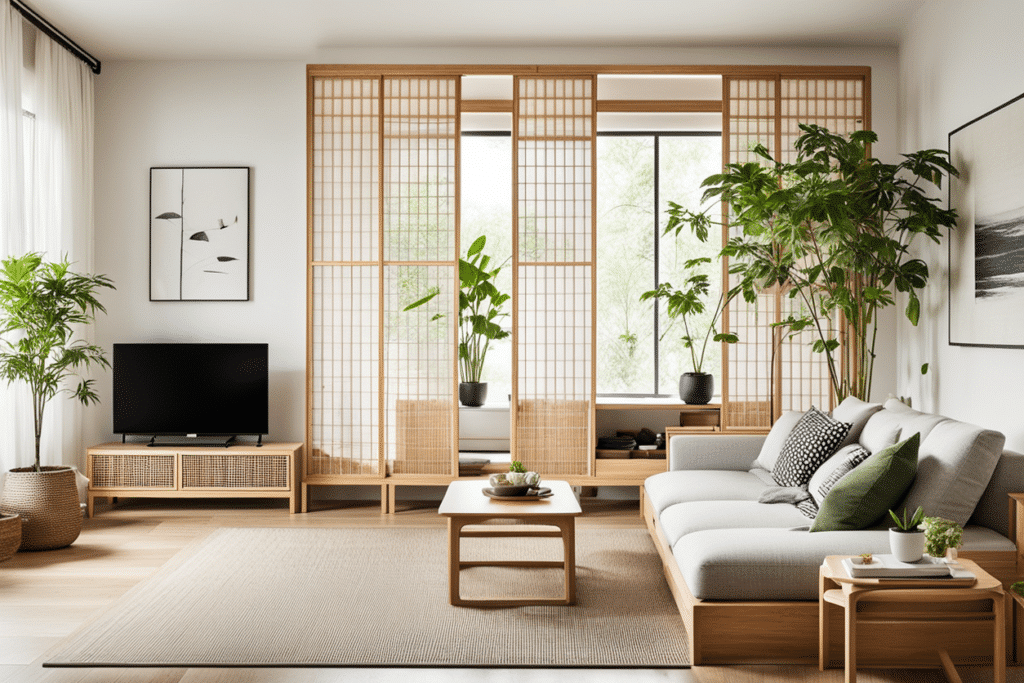
Japandi Style FAQ
What is Japandi style?
Japandi style is a blend of Japanese and Scandinavian design principles, focusing on simplicity, functionality, natural materials, and a calming atmosphere. It combines the Japanese concept of wabi-sabi with the Scandinavian idea of hygge.
What are the key elements of Japandi design?
Key elements include minimalism, natural materials, a neutral color palette, functionality, clean lines, negative space, and a connection with nature.
How can I incorporate Japandi style into my home?
Start by decluttering, choosing a neutral color palette, selecting natural materials, creating negative space, focusing on functionality, and bringing nature indoors with plants and natural light.
Is Japandi style expensive?
Japandi pieces range from affordable to high-end. The focus on quality means you may invest in fewer, more durable items, which can be budget-friendly in the long run.
What is the difference between Japandi and Scandinavian design?
While Scandinavian design emphasizes light and airy spaces with cooler tones, Japandi blends these with warmer, earthier tones and Japanese aesthetics, creating a more rustic and serene look.
Can Japandi style be used in a workspace?
Absolutely. Incorporate natural light, simple and functional furniture, plants, and a neutral color palette to create a serene and productive workspace.
How does Japandi style handle color palettes?
Japandi uses neutral colors like whites, beiges, browns, and grays, often accented with deeper, earthy tones to add contrast and warmth.
What is the history of Japandi style?
Japandi emerged over a century ago when Japanese aesthetics inspired Scandinavian designers. This fusion has evolved, drawing on principles of minimalism and functionality from both cultures.








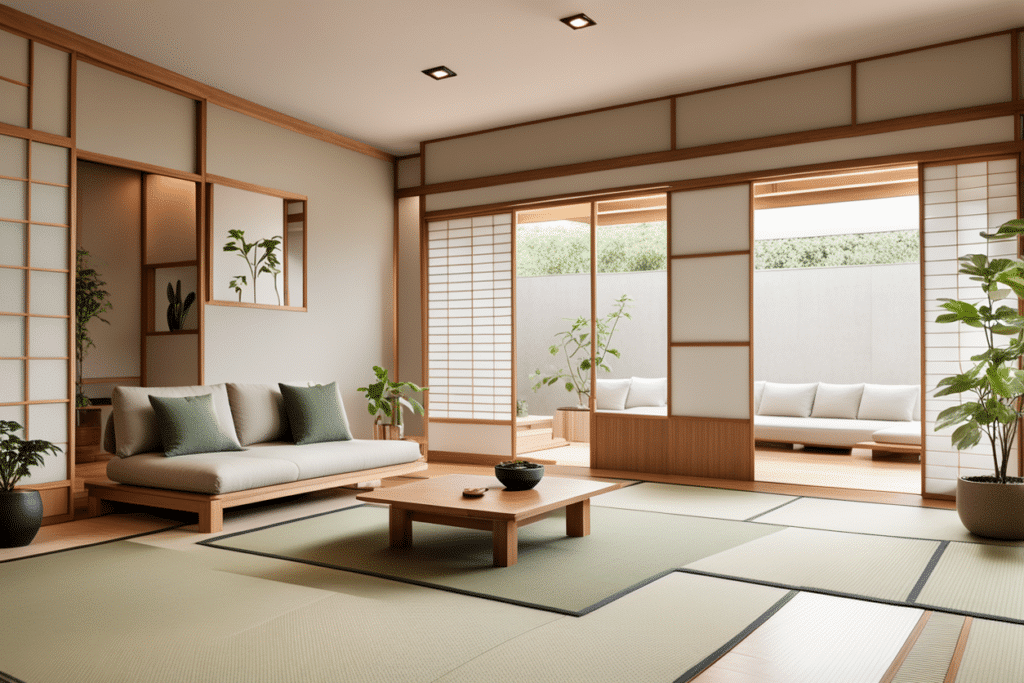











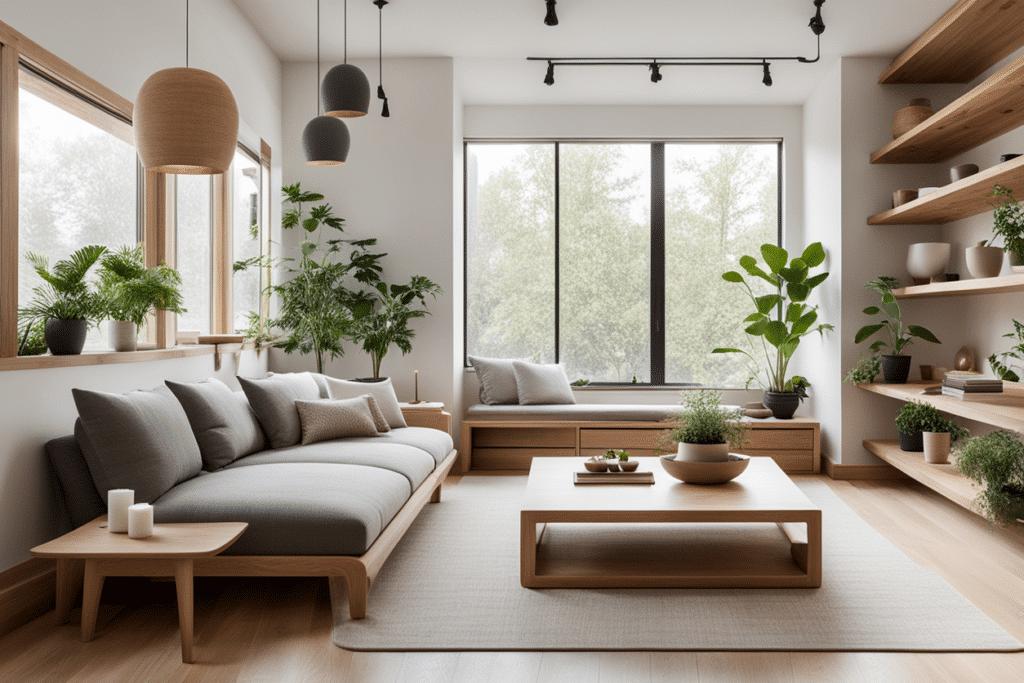








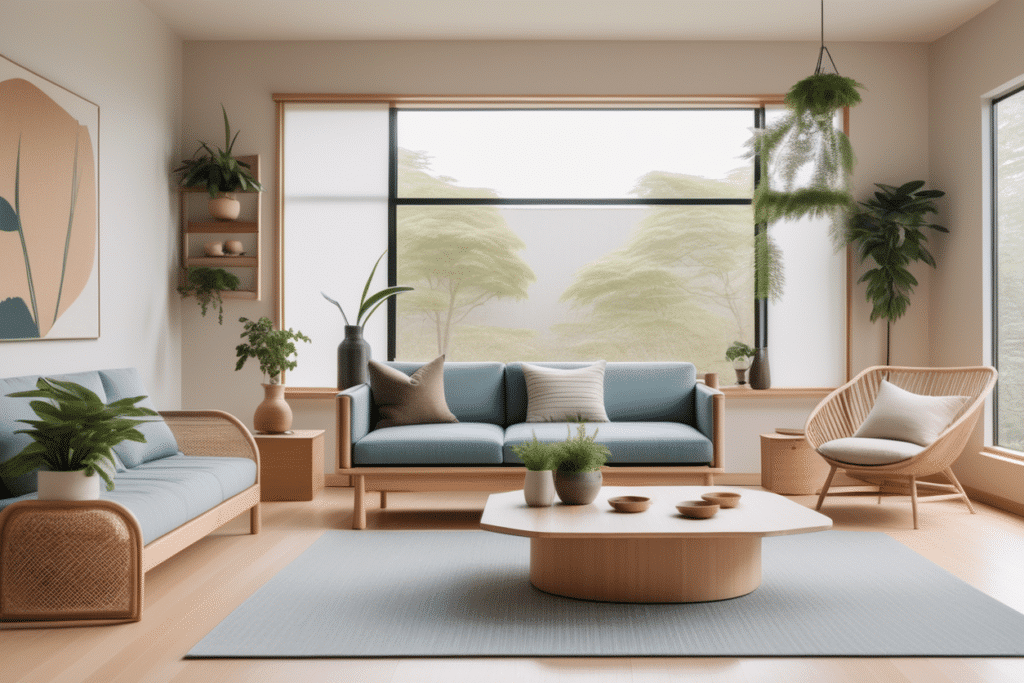



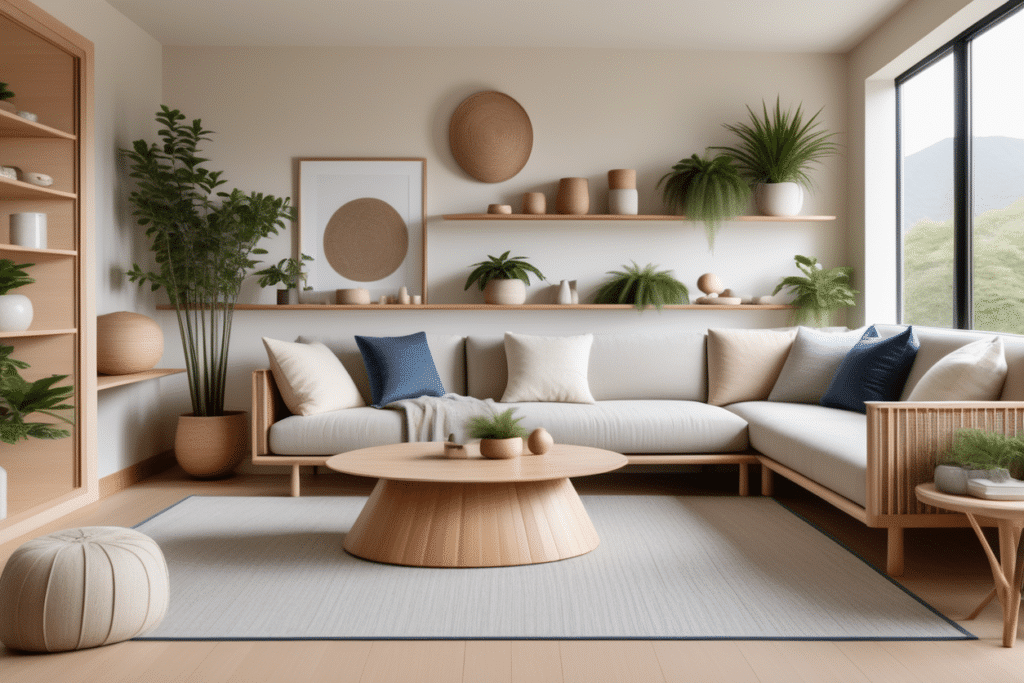


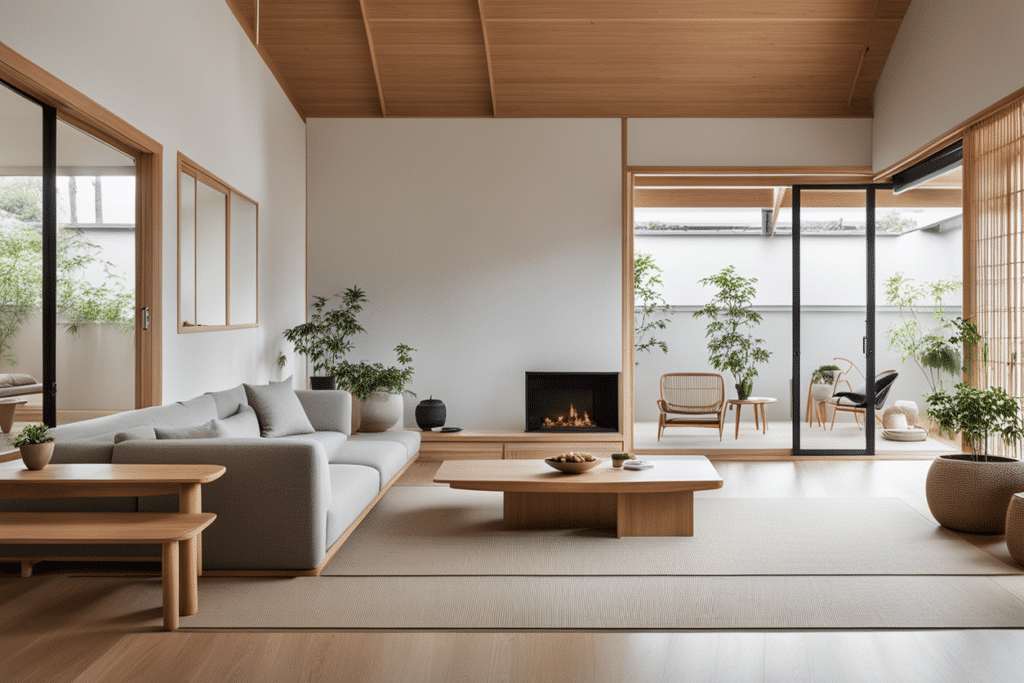









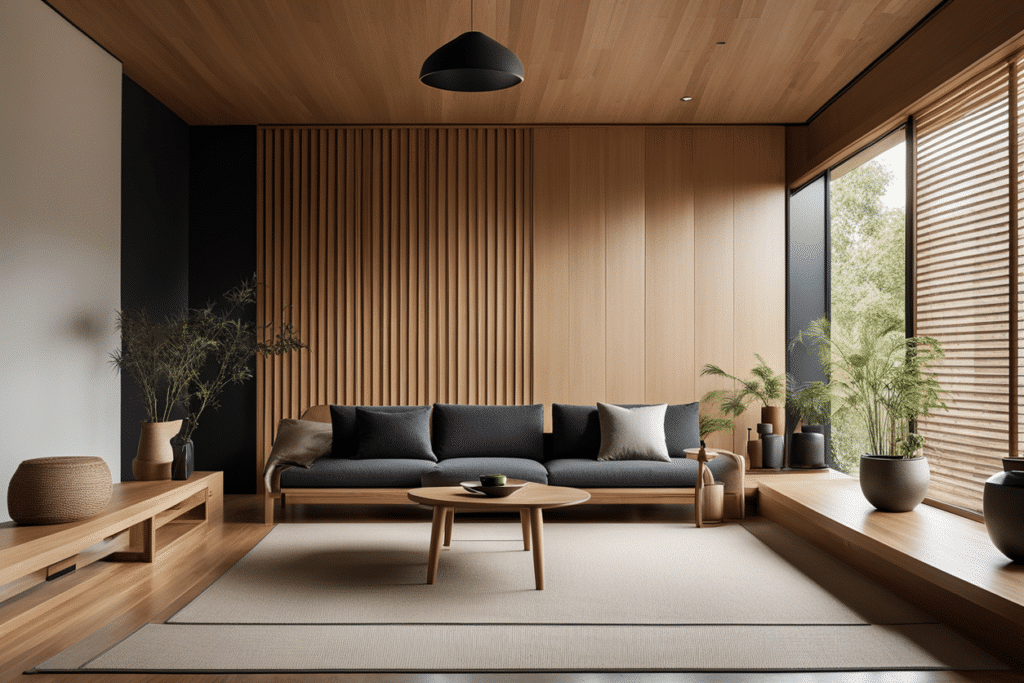










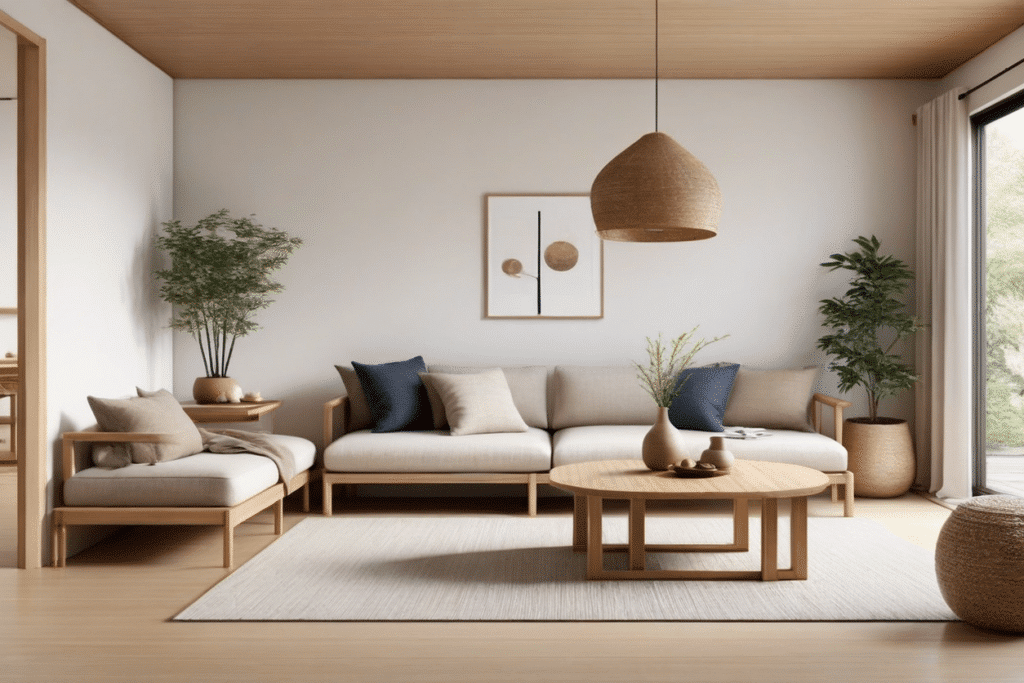







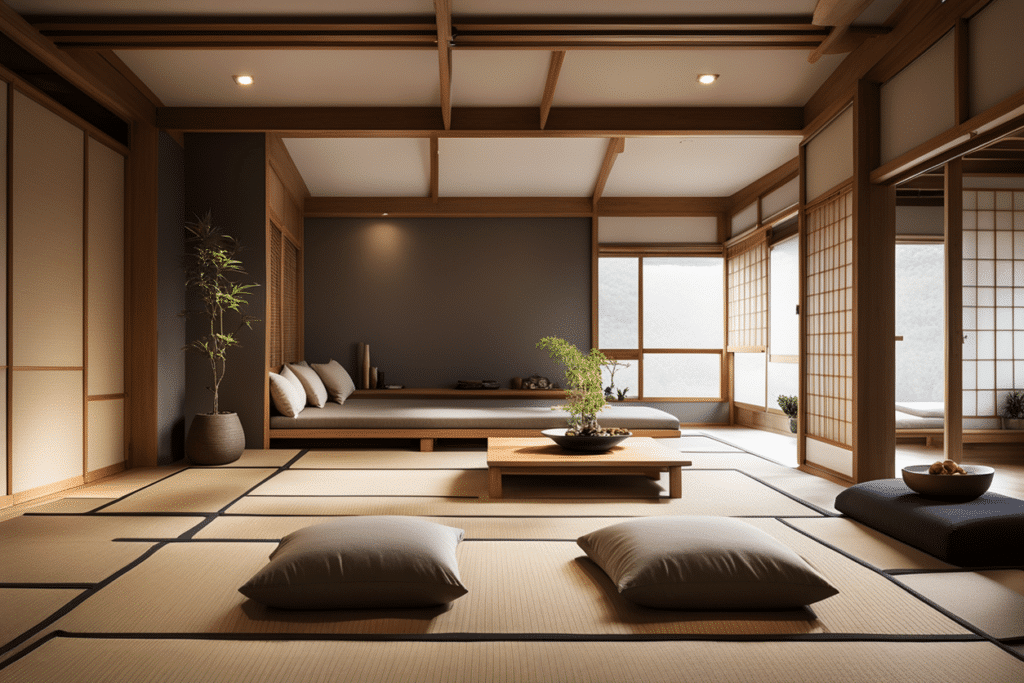
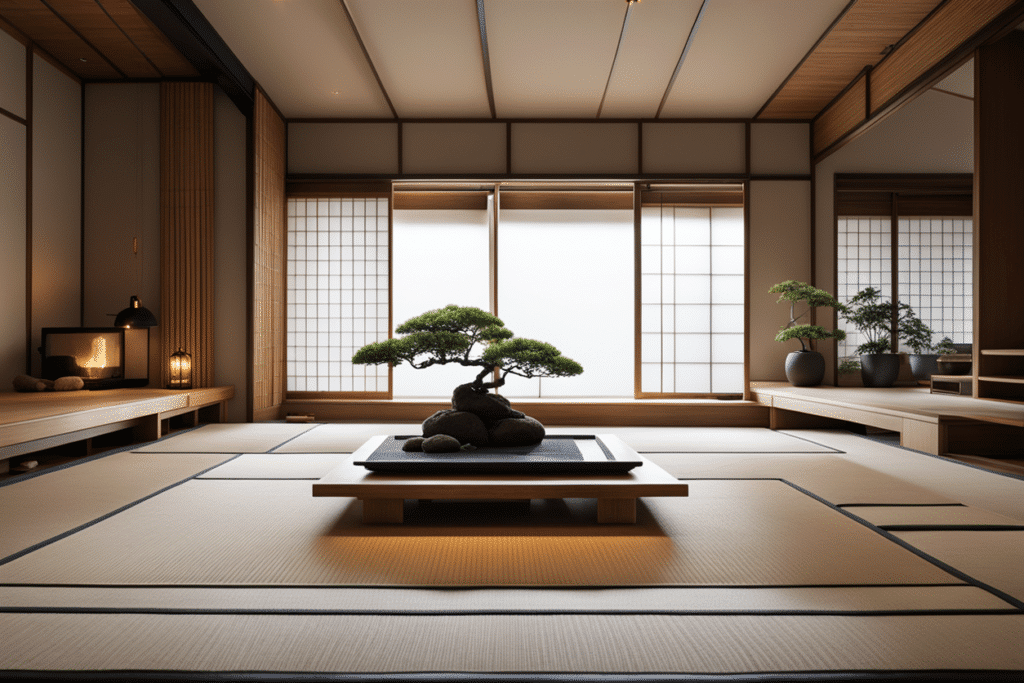


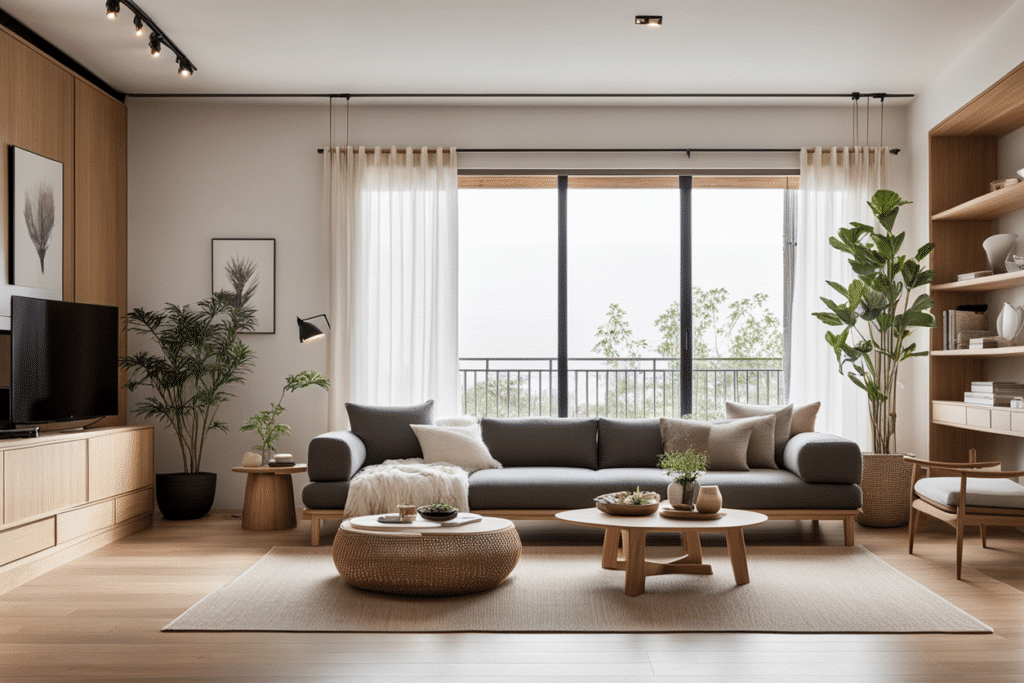
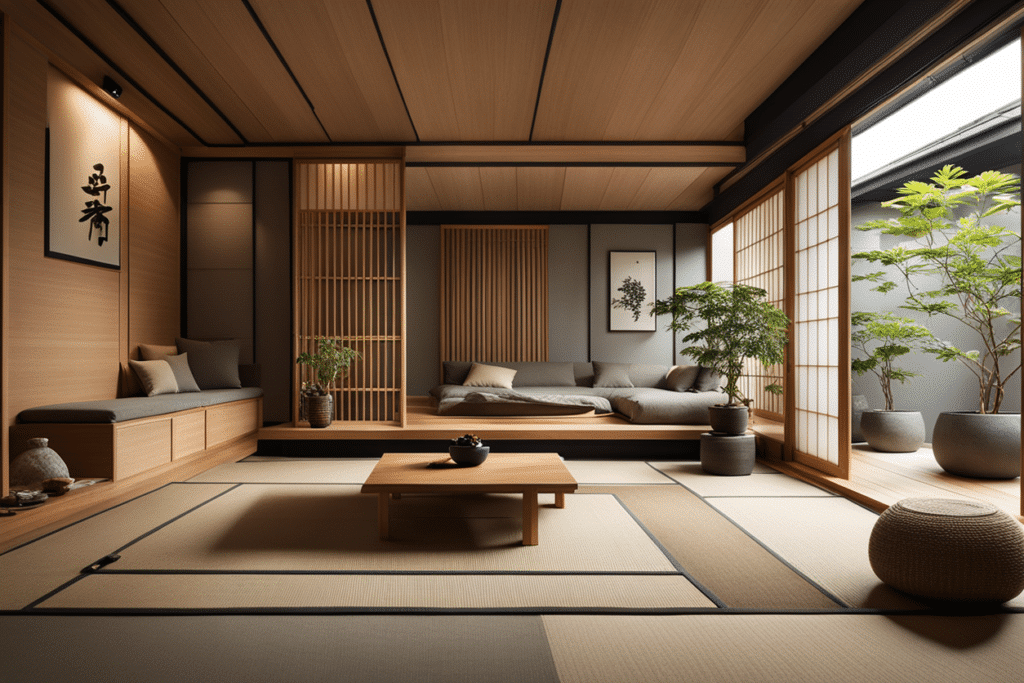


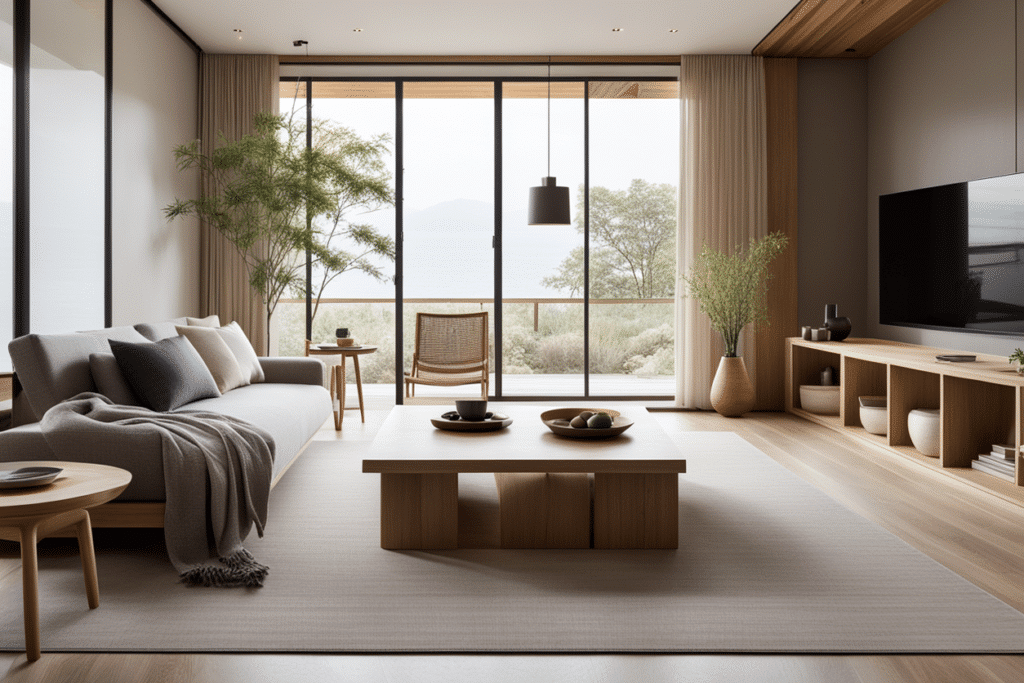
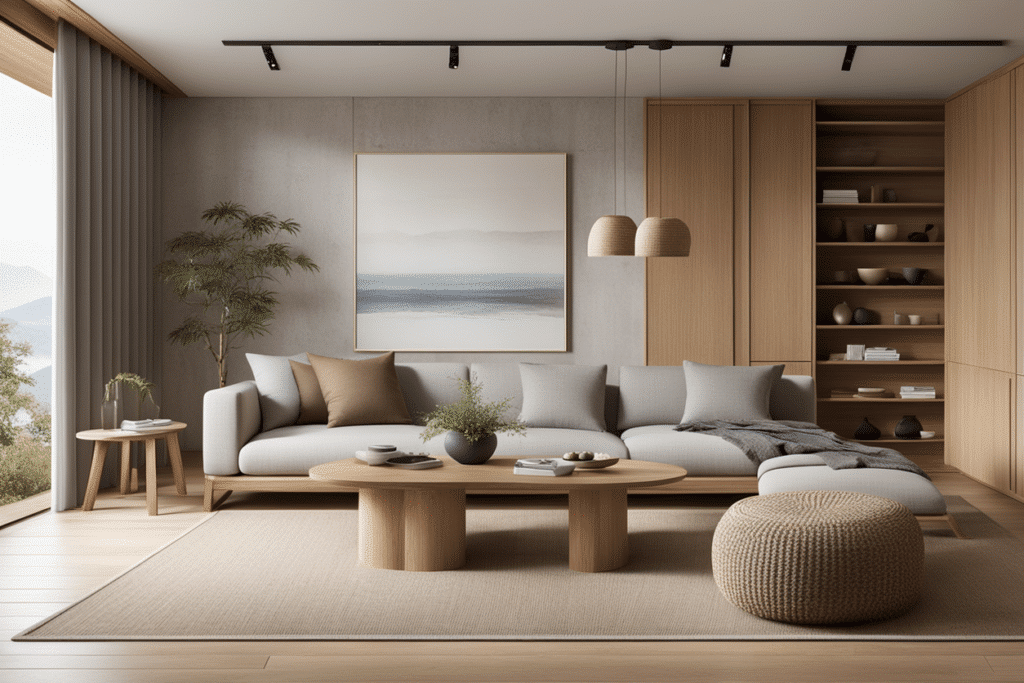






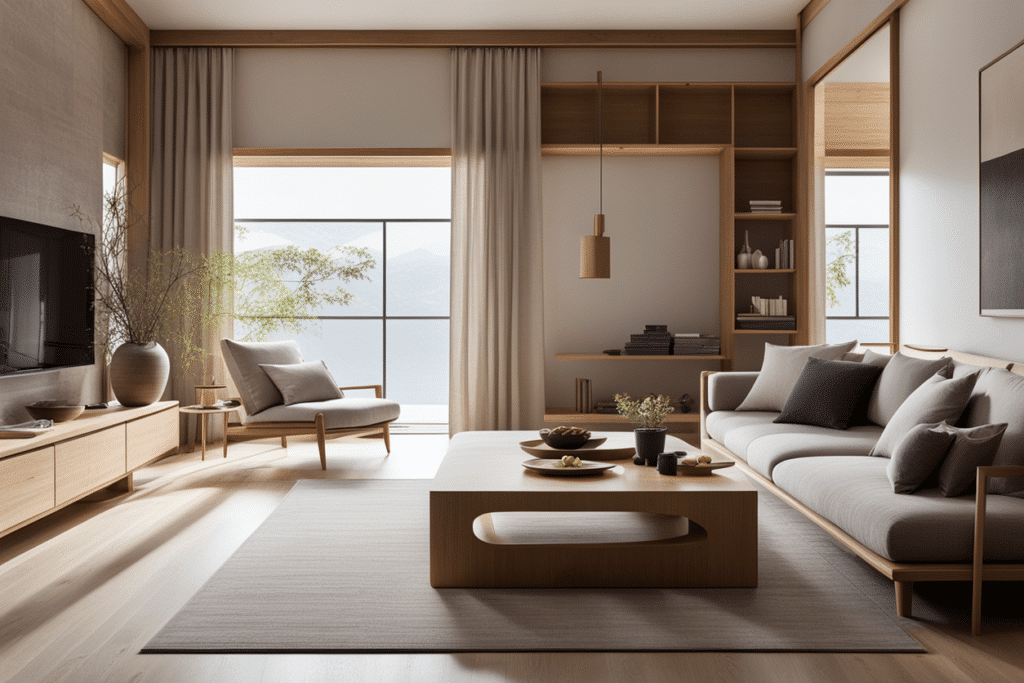
Japandi style offers a tranquil and functional approach to interior design, perfect for those seeking a balanced and serene living space. By embracing its principles, you can create a home that looks beautiful and feels comforting and purposeful.